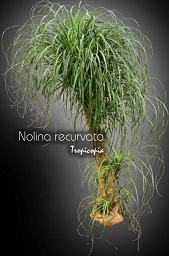Table of contents
Elephant foot

Latin Name: Nolina recurvata
Category: Foliage plant
Family: Agavaceae
Origin: Mexico
Climate: Arid Tropical
Growing Zones: 11-10
Care Instructions
The Elephant foot (Nolina recurvata) is a arid tropical plant that originates from Mexico. This foliage plant plant belongs to the Agavaceae family and is well-suited for growing in USDA zones 11-10.
Complete Care Guide for Elephant Foot (Nolina recurvata)
Watering Requirements
The Elephant Foot, or Nolina recurvata, is a drought-tolerant plant that thrives in well-draining soil. When it comes to watering, it is essential to allow the soil to dry out completely between waterings. During the growing season, which typically spans from spring to early fall, water the plant every two to three weeks. In the winter months, reduce watering to once a month or even less, as the plant enters a dormant phase. Overwatering can lead to root rot, so always check the soil moisture before adding more water. A good rule of thumb is to stick your finger about an inch into the soil; if it feels dry, it’s time to water.
Light Conditions
Nolina recurvata prefers bright, indirect light but can also tolerate full sun. Ideally, place your Elephant Foot in a location where it receives at least 6 hours of light daily. If grown indoors, a south or west-facing window is ideal. However, be cautious of direct sunlight during the hottest part of the day, as it can scorch the leaves. If you notice the leaves turning yellow or becoming leggy, it may be a sign that the plant is not receiving enough light. Conversely, if the leaves are browning at the tips, it may be getting too much direct sunlight.
Soil Preferences
The Elephant Foot thrives in well-draining soil that mimics its native arid environment. A cactus or succulent potting mix is ideal, as it allows for proper drainage and prevents water retention. If you prefer to create your own mix, combine equal parts of potting soil, sand, and perlite to enhance drainage. Fertilization should be minimal; during the growing season, you can apply a diluted, balanced liquid fertilizer every 4-6 weeks. Avoid fertilizing in the winter months when the plant is dormant, as this can lead to nutrient buildup and harm the roots.
Pests and Diseases
The Elephant Foot is relatively pest-resistant, but it can occasionally be affected by common houseplant pests such as spider mites, mealybugs, and scale. To identify these pests, look for webbing, sticky residue, or small cotton-like clusters on the leaves. If you notice any of these signs, treat the plant with insecticidal soap or neem oil, ensuring to cover all surfaces of the leaves. Additionally, be cautious of overwatering, which can lead to root rot and fungal diseases. If you suspect root rot, remove the plant from its pot, trim away any affected roots, and repot it in fresh, dry soil.
Special Care Tips
To keep your Elephant Foot healthy and thriving, consider the following special care tips: First, ensure that the pot has drainage holes to prevent water from accumulating at the bottom. Second, rotate the plant occasionally to promote even growth and prevent it from leaning towards the light source. Third, dust the leaves regularly with a damp cloth to keep them clean and allow for optimal photosynthesis. Lastly, if you notice that the plant has outgrown its pot, repot it in a slightly larger container every couple of years to provide ample space for growth. With these care tips, your Nolina recurvata will flourish and become a stunning focal point in your home or garden.








